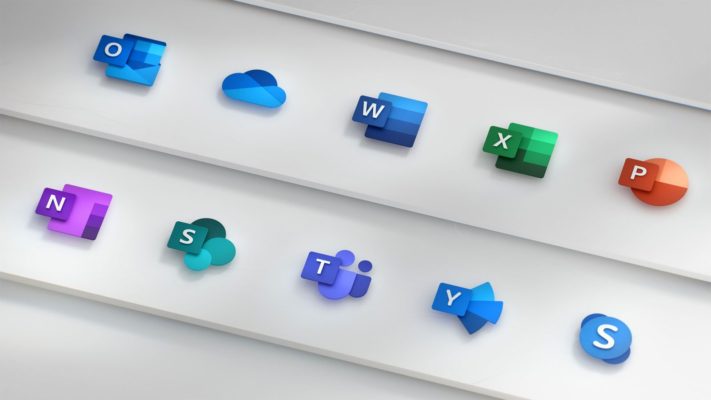Please fill out your details below and one of our team will assist you with you booking.
20767 – Implementing a SQL Data Warehouse
5 Days
Advanced
Instructor-led
Overview
About this course
This five-day instructor-led course provides students with the knowledge and skills to provision a Microsoft SQL Server database. The course covers SQL Server provision both on-premise and in Azure, and covers installing from new and migrating from an existing install.
Audience profile
The primary audience for this course are database professionals who need to fulfil a Business Intelligence Developer role. They will need to focus on hands-on work creating BI solutions including Data Warehouse implementation, ETL, and data cleansing.
At course completion
After completing this course, students will be able to:
- Describe the key elements of a data warehousing solution
- Describe the main hardware considerations for building a data warehouse
- Implement a logical design for a data warehouse
- Implement a physical design for a data warehouse
- Create columnstore indexes
- Implementing an Azure SQL Data Warehouse
- Describe the key features of SSIS
- Implement a data flow by using SSIS
- Implement control flow by using tasks and precedence constraints
- Create dynamic packages that include variables and parameters
- Debug SSIS packages
- Describe the considerations for implement an ETL solution
- Implement Data Quality Services
- Implement a Master Data Services model
- Describe how you can use custom components to extend SSIS
- Deploy SSIS projects
- Describe BI and common BI scenarios
Prerequisites
In addition to their professional experience, students who attend this training should already have the following technical knowledge:
- Basic knowledge of the Microsoft Windows operating system and its core functionality.
- Working knowledge of relational databases.
- Some experience with database design.
Outline
Module 1: Introduction to Data Warehousing
This module describes data warehouse concepts and architecture consideration.
Lessons
- Overview of Data Warehousing
- Considerations for a Data Warehouse Solution
Lab : Exploring a Data Warehouse Solution
- Exploring data sources
- Exploring an ETL process
- Exploring a data warehouse
After completing this module, you will be able to:
- Describe the key elements of a data warehousing solution
- Describe the key considerations for a data warehousing solution
Module 2: Planning Data Warehouse Infrastructure
This module describes the main hardware considerations for building a data warehouse.
Lessons
- Considerations for data warehouse infrastructure.
- Planning data warehouse hardware.
Lab : Planning Data Warehouse Infrastructure
- Planning data warehouse hardware
After completing this module, you will be able to:
- Describe the main hardware considerations for building a data warehouse
- Explain how to use reference architectures and data warehouse appliances to create a data warehouse
Module 3: Designing and Implementing a Data Warehouse
This module describes how you go about designing and implementing a schema for a data warehouse.
Lessons
- Data warehouse design overview
- Designing dimension tables
- Designing fact tables
- Physical Design for a Data Warehouse
Lab : Implementing a Data Warehouse Schema
- Implementing a star schema
- Implementing a snowflake schema
- Implementing a time dimension table
After completing this module, you will be able to:
- Implement a logical design for a data warehouse
- Implement a physical design for a data warehouse
Module 4: Columnstore Indexes
This module introduces Columnstore Indexes.
Lessons
- Introduction to Columnstore Indexes
- Creating Columnstore Indexes
- Working with Columnstore Indexes
Lab : Using Columnstore Indexes
- Create a Columnstore index on the FactProductInventory table
- Create a Columnstore index on the FactInternetSales table
- Create a memory optimized Columnstore table
After completing this module, you will be able to:
- Create Columnstore indexes
- Work with Columnstore Indexes
Module 5: Implementing an Azure SQL Data Warehouse
This module describes Azure SQL Data Warehouses and how to implement them.
Lessons
- Advantages of Azure SQL Data Warehouse
- Implementing an Azure SQL Data Warehouse
- Developing an Azure SQL Data Warehouse
- Migrating to an Azure SQ Data Warehouse
- Copying data with the Azure data factory
Lab : Implementing an Azure SQL Data Warehouse
- Create an Azure SQL data warehouse database
- Migrate to an Azure SQL Data warehouse database
- Copy data with the Azure data factory
After completing this module, you will be able to:
- Describe the advantages of Azure SQL Data Warehouse
- Implement an Azure SQL Data Warehouse
- Describe the considerations for developing an Azure SQL Data Warehouse
- Plan for migrating to Azure SQL Data Warehouse
Module 6: Creating an ETL Solution
At the end of this module you will be able to implement data flow in a SSIS package.
Lessons
- Introduction to ETL with SSIS
- Exploring Source Data
- Implementing Data Flow
Lab : Implementing Data Flow in an SSIS Package
- Exploring source data
- Transferring data by using a data row task
- Using transformation components in a data row
After completing this module, you will be able to:
- Describe ETL with SSIS
- Explore Source Data
- Implement a Data Flow
Module 7: Implementing Control Flow in an SSIS Package
This module describes implementing control flow in an SSIS package.
Lessons
- Introduction to Control Flow
- Creating Dynamic Packages
- Using Containers
- Managing consistency.
Lab : Implementing Control Flow in an SSIS Package
- Using tasks and precedence in a control flow
- Using variables and parameters
- Using containers
Lab : Using Transactions and Checkpoints
- Using transactions
- Using checkpoints
After completing this module, you will be able to:
- Describe control flow
- Create dynamic packages
- Use containers
Module 8: Debugging and Troubleshooting SSIS Packages
This module describes how to debug and troubleshoot SSIS packages.
Lessons
- Debugging an SSIS Package
- Logging SSIS Package Events
- Handling Errors in an SSIS Package
Lab : Debugging and Troubleshooting an SSIS Package
- Debugging an SSIS package
- Logging SSIS package execution
- Implementing an event handler
- Handling errors in data flow
After completing this module, you will be able to:
- Debug an SSIS package
- Log SSIS package events
- Handle errors in an SSIS package
Module 9: Implementing a Data Extraction Solution
This module describes how to implement an SSIS solution that supports incremental DW loads and changing data.
Lessons
- Introduction to Incremental ETL
- Extracting Modified Data
- Loading modified data
- Temporal Tables
Lab : Extracting Modified Data
- Using a datetime column to incrementally extract data
- Using change data capture
- Using the CDC control task
- Using change tracking
Lab : Loading a data warehouse
- Loading data from CDC output tables
- Using a lookup transformation to insert or update dimension data
- Implementing a slowly changing dimension
- Using the merge statement
After completing this module, you will be able to:
- Describe incremental ETL
- Extract modified data
- Load modified data.
- Describe temporal tables
Module 10: Enforcing Data Quality
This module describes how to implement data cleansing by using Microsoft Data Quality services.
Lessons
- Introduction to Data Quality
- Using Data Quality Services to Cleanse Data
- Using Data Quality Services to Match Data
Lab : Cleansing Data
- Creating a DQS knowledge base
- Using a DQS project to cleanse data
- Using DQS in an SSIS package
Lab : De-duplicating Data
- Creating a matching policy
- Using a DS project to match data
After completing this module, you will be able to:
- Describe data quality services
- Cleanse data using data quality services
- Match data using data quality services
- De-duplicate data using data quality services
Module 11: Using Master Data Services
This module describes how to implement master data services to enforce data integrity at source.
Lessons
- Introduction to Master Data Services
- Implementing a Master Data Services Model
- Hierarchies and collections
- Creating a Master Data Hub
Lab : Implementing Master Data Services
- Creating a master data services model
- Using the master data services add-in for Excel
- Enforcing business rules
- Loading data into a model
- Consuming master data services data
After completing this module, you will be able to:
- Describe the key concepts of master data services
- Implement a master data service model
- Manage master data
- Create a master data hub
Module 12: Extending SQL Server Integration Services (SSIS)
This module describes how to extend SSIS with custom scripts and components.
Lessons
- Using scripting in SSIS
- Using custom components in SSIS
Lab : Using scripts
- Using a script task
After completing this module, you will be able to:
- Use custom components in SSIS
- Use scripting in SSIS
Module 13: Deploying and Configuring SSIS Packages
This module describes how to deploy and configure SSIS packages.
Lessons
- Overview of SSIS Deployment
- Deploying SSIS Projects
- Planning SSIS Package Execution
Lab : Deploying and Configuring SSIS Packages
- Creating an SSIS catalog
- Deploying an SSIS project
- Creating environments for an SSIS solution
- Running an SSIS package in SQL server management studio
- Scheduling SSIS packages with SQL server agent
After completing this module, you will be able to:
- Describe an SSIS deployment
- Deploy an SSIS package
- Plan SSIS package execution
Module 14: Consuming Data in a Data Warehouse
This module describes how to debug and troubleshoot SSIS packages.
Lessons
- Introduction to Business Intelligence
- An Introduction to Data Analysis
- Introduction to reporting
- Analyzing Data with Azure SQL Data Warehouse
Lab : Using a data warehouse
- Exploring a reporting services report
- Exploring a PowerPivot workbook
- Exploring a power view report
After completing this module, you will be able to:
- Describe at a high level business intelligence
- Show an understanding of reporting
- Show an understanding of data analysis
- Analyze data with Azure SQL data warehouse
Please enter your details below and we will send you the full course outline.





